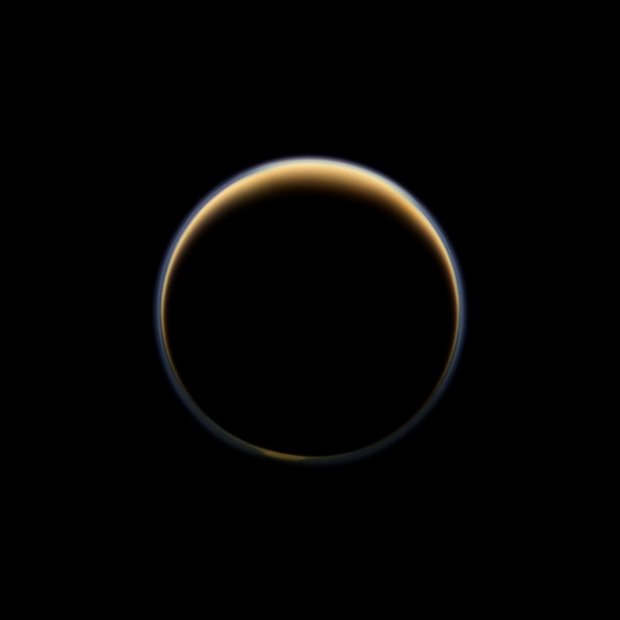
NASA’s Cassini spacecraft has detected the presence of propylene, a chemical compound used to create plastic materials, on Titan, the largest moon of the planet Saturn. It’s the first time that this ingredient of plastic is found outside of the Earth.
Propylene, also known as propene, is one of the most simple hydrocarbons and belongs to the class of alkenes, which are organic compounds composed only of carbon and hydrogen atoms. Its molecular formula is C<sub>3</sub>H<sub>6</sub>. In Earth’s ambient conditions is in the form of a gas and is generally produced through a process called cracking, meaning breaking molecules of heavier hydrocarbons. However, it can also be produced by natural processes by vegetation.
Propylene is used mostly to produce polypropylene, a plastic material very common in the production of objects of daily use. This makes it one of the most important products of the petrochemical industry. Through various processes, it can be used to produce other substances such as acetone.
On Titan, the Voyager 1 space probe had already detected the presence of hydrocarbons in 1980. For example, propane and propyne, which are the heaviest and the lightest molecule of the family with three hydrogen atoms were found but average weight molecules such as propylene weren’t found.
Research on the hydrocarbons present in the atmosphere of Titan went on using instruments on Earth and in space. On this satellite, sunlight breaks the molecules of methane, a very common gas, leading to the formation of other molecules that may contain two or more carbon atoms.
Using the Composite InfraRed Spectrometer (CIRS), one of the instruments of the Cassini space probe, it was finally possible to detect the presence of propylene. It was difficult to detect because its chemical signature is weak and is confused by the presence of other similar molecules that give stronger signals.
Isolating propylene’s chemical signature at various altitudes in Titan’s low atmosphere, eventually it was possible to identify with reasonable certainty the presence of this molecule. Its discovery will help scientists better understand what happens in the atmosphere of Titan, one of the most fascinating celestial bodies in the solar system because despite its distance from the Sun complex chemical reactions are occurring there.
[ad name=”eBayUSUKAstronomy”]

